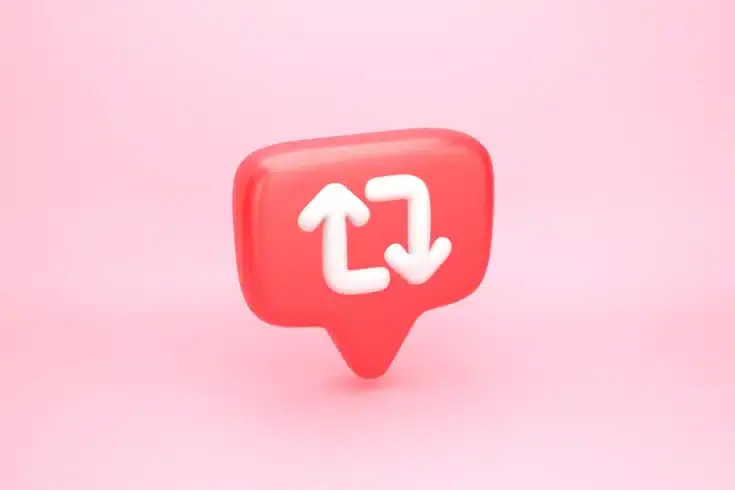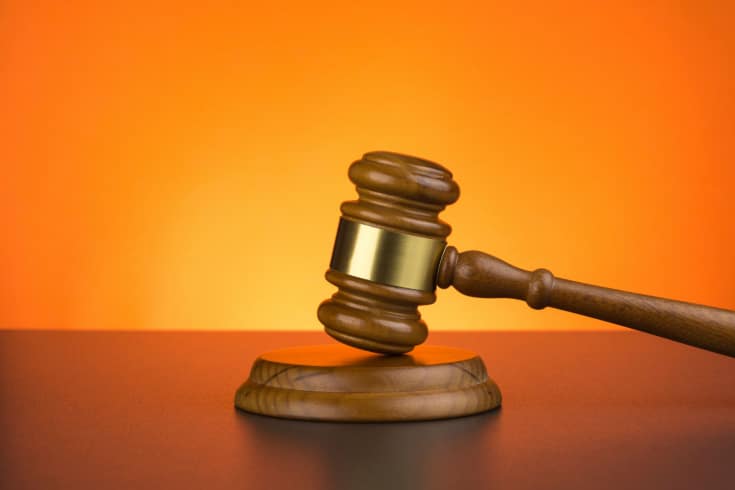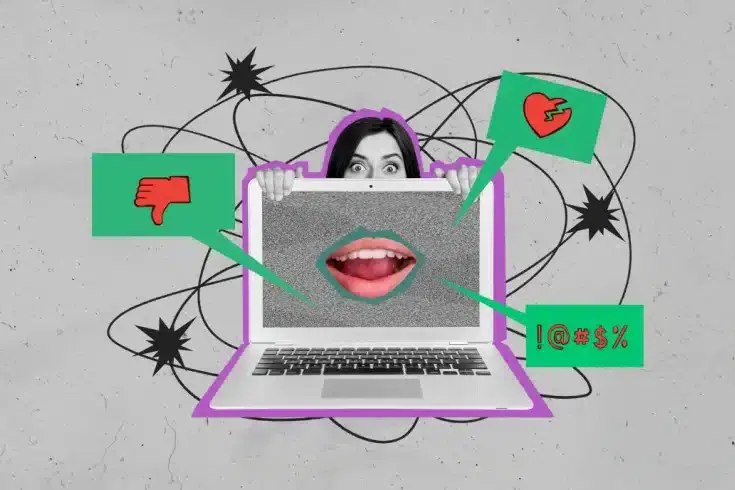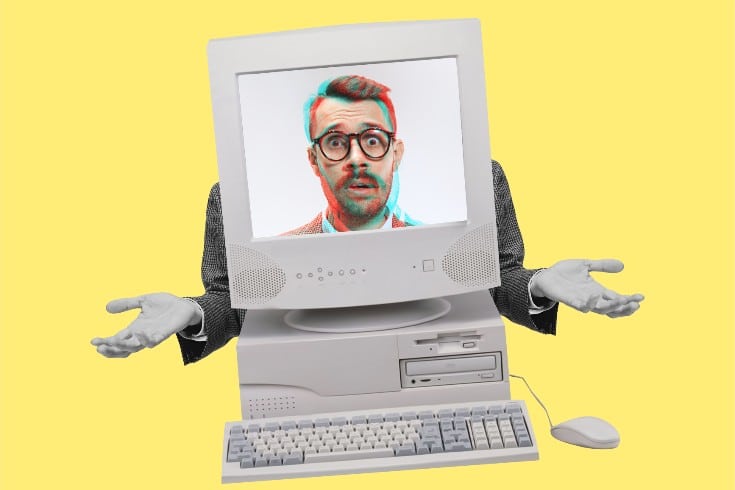Does Reposting (Retweeting) Images Posted Without Permission Constitute Copyright Infringement?

Social media has become an essential tool for information dissemination not only for individuals but also for companies. While the use of attractive images in communications can be effective for public relations and promotional activities, there is a risk of unintentionally infringing on copyright if those images are used without permission from third-party creators. In particular, casual retweets and shares by employees could potentially damage the overall trust in a company.
This article addresses the critical question, “Can a company be held liable for copyright infringement if it disseminates images posted without authorization?” We will explore this issue through actual cases and their corresponding legal precedents in Japan.
The Relationship Between Virality on Social Media and Copyright Law in Japan
Social media is an essential communication tool for individuals and businesses alike in today’s world, where information spreads in the blink of an eye. However, due to its high virality, issues related to copyright often arise. This is particularly true for works such as images and videos, which can be easily copied and reposted, leading to widespread dissemination without the consent of the rights holders.
The Japanese Copyright Law grants various rights to the creators of works and prohibits acts that infringe upon these rights. It is important to note that copyright infringement can occur not only intentionally but also through negligence or ignorance.
What are the legal aspects of “virality” on social media? Two primary rights come into play: the “right of reproduction” and the “right of public transmission.”
The right of reproduction is the right to copy or print a work. Using functions like retweeting or sharing to display an image on your account involves temporarily storing the image as cache data to display it on an information processing terminal, which could potentially infringe upon this right of reproduction.
The right of public transmission is the right to transmit a work to the public via communication lines such as the internet or to make it available for reception. By retweeting or sharing, making an image viewable to an unspecified large number of people, such as your followers, could potentially involve this right of public transmission.
Related article: The Relationship Between the Publication of Photos Without Consent and Copyright Law in Japan
The Case of Tweets and Retweets on Twitter (now known as X)

On the internet and social media platforms, uploading copyrighted works without permission is a violation of copyright law. But what about retweeting a tweet with an image that was uploaded without authorization?
There is a precedent set by the Supreme Court of Japan that even retweeting someone else’s image-accompanied tweet in accordance with Twitter’s (now X) specifications can potentially infringe on copyright.
In this case, the plaintiff was a professional photographer. The plaintiff had added a copyright notice “Ⓒ (author’s name)” to the corner of a lily of the valley photo and posted this image on their own website. The plaintiff filed a request for disclosure of sender information against Twitter Inc. (Twitter Japan Inc., the Japanese subsidiary, and Twitter Inc., the headquarters at the time) alleging that the photo had been uploaded illegally (company names and other details are as stated at the time).
An unidentified user A uploaded the photo in question as their profile picture without the plaintiff’s permission. As a result, the image file was automatically saved and displayed on Twitter’s profile image file storage URL, and the photo appeared on user A’s timeline.
An unidentified user B tweeted the photo in question from their account without the plaintiff’s permission. Consequently, the image file was automatically saved and displayed on Twitter’s tweet image file storage URL, and the photo appeared on the URL displaying the tweet and on user B’s timeline.
Unidentified users CDE each retweeted user B’s tweet, which resulted in the photo in question being displayed on each of their timelines.
The plaintiff argued that the display of the photo by accounts A and B infringed on the right of public transmission (Article 23, Paragraph 1 of the Copyright Law). Twitter Inc. did not dispute that setting the image as a profile picture or tweeting the image itself without permission constituted an infringement of the right of public transmission. The point of contention in this case was the retweeting by users CDE. Whether the retweeting displayed the photo and infringed on the plaintiff’s copyright was the issue at hand.
Related article: Copyright Nature and Authorship in Photo Posting
Plaintiff and Defendant’s Claims
The plaintiff claimed infringement of:
- the right of public transmission,
- the right to maintain integrity,
- the right to be identified as the author, and
- the right to protect one’s honor and reputation.
Let’s examine each of these individually.
The plaintiff argued that not only those who posted tweets with images but also those who retweeted such tweets were infringing on copyright, including the right of public transmission, by displaying unauthorized reproduced images on their timelines through retweets.
Furthermore, the plaintiff claimed that the automatic trimming of images in tweets when displayed on timelines through retweets (known as ‘inline linking’) infringes on the right to maintain integrity (Article 20, Paragraph 1 of the Japanese Copyright Law). The right to maintain integrity refers to the right not to have one’s work or title altered against one’s will.
Additionally, due to the trimming, the plaintiff’s name became unrecognizable, leading to a claim of infringement of the right to be identified as the author.
The plaintiff also argued that the act of retweeting gave viewers the false impression that the plaintiff’s photograph was a ‘low-value work of art that could be used without permission,’ infringing on the right to protect one’s honor and reputation (Article 113, Paragraph 6 of the Japanese Copyright Law).
In response, Twitter Inc. argued that retweeters are not transmitting the image (photo) data themselves but merely unrelated data, and therefore, there is no infringement of the right of public transmission.
Regarding the plaintiff’s claim that the automatic trimming constitutes an infringement of moral rights, Twitter Inc. countered as follows:
- Due to Twitter’s specifications, the trimming is performed on the internet user’s computer, who is the viewer. Therefore, the internet user is the agent of the trimming act, not the retweeter, and the infringement of the right to maintain integrity and the right to be identified as the author does not apply to the retweeter.
- The trimming is an automatic and mechanical process carried out by Twitter’s system to display multiple photos naturally within a limited screen space, and it is a ‘necessary’ (Article 20, Paragraph 2, Item 4 of the Copyright Law) alteration, so there is no infringement of the right to maintain integrity.
- It is not considered that the retweeting of posts leads to a decrease in the plaintiff’s objective honor and reputation, so the right to protect one’s honor and reputation does not apply.
Related article: What Are Moral Rights of Authors and the Protection of Honor or Reputation?
Tokyo District Court Ruling: Plaintiff’s Claim Denied
The Tokyo District Court, in its first instance decision, evaluated CDE’s retweeting activity as follows:
- The act of retweeting automatically sets an inline link to the URL of the original timeline, directly transmitting the image file data from the URL to the user’s computer or other devices.
- Since no data of the distributed information is transmitted to each URL, and no such data is sent from the URL to the user’s device, the retweeting activity in question does not itself transmit the above data, nor does it enable its transmission.
Based on these points, the court determined that the retweeting did not constitute a public transmission. Furthermore, due to the nature of retweeting, no alteration of the image file occurs, so there is no infringement of the right to maintain integrity. It was also determined that there was no infringement of the right to be identified as the author, as the retweeters did not provide or present the photograph in question to the public.
The plaintiff argued that the transmission of the image file of the photograph in question from the URL of the distributed information to the client computer due to the retweeting activity constituted an automatic public transmission, and that the retweeters should be considered the subjects of this infringement, thus making the retweeting activity a violation of the right to public transmission.
However, since it was B who uploaded the image file of the photograph to Twitter’s server and created the condition that made it possible to transmit to the public, the court deemed B as the subject of the aforementioned transmission. The court ordered the disclosure of sender information for A and B but did not grant the disclosure of the corresponding email address for CDE (Tokyo District Court decision on September 15, 2016 (Heisei 28)).
Dissatisfied with this outcome, the plaintiff appealed the decision.
Intellectual Property High Court Ruling: Partially Upholds Plaintiff’s Claims

The Intellectual Property High Court, in its second instance decision, ruled that it could not be said that the retweeters themselves were the subjects of the automatic public transmission in the infringement of the right of public transmission by CDE, nor could it be said that the act of retweeting facilitated the automatic public transmission itself. Therefore, the court did not recognize the retweeters as accomplices.
Furthermore, since the photograph in question, being a work of authorship, was transmitted only as data, the court ruled that it could not be considered as having been reproduced through retweeting, and thus did not recognize an infringement of reproduction rights. Additionally, since the act of infringing the right of public transmission was not recognized, there was no room to acknowledge any assistance in such infringement, leading to a judgment similar to that of the first instance.
On the other hand, the court examined the infringement of moral rights of the author. Regarding the right to maintain the integrity of the work, the court found that the image in question, being a creative expression of thought or sentiment within the realms of literature, academia, art, or music, could be considered a work protected under copyright law. However, since the image was altered in terms of location and size as a result of the retweeting by the CDE account, the court recognized that it had been modified by the retweeters, thus infringing the right to maintain the integrity of the work. Furthermore, since the name of the appellant, a professional photographer, was not displayed as a result of the retweeting, the court acknowledged that the appellant’s right to have their name displayed in connection with the provision or presentation of the work to the public was infringed by the retweeters’ actions.
The Intellectual Property High Court also addressed the defendants’ argument that the alterations associated with the retweeting fell under the “unavoidable” modifications stipulated in Article 20, Paragraph 4 of the Copyright Law. However, the court ruled that it could not recognize such alterations as “unavoidable” since the retweeting in question involved unauthorized tweeting of the photograph by Account 2, which was then retweeted.
As for the right to preserve honor and reputation, the court did not find any infringement. The reason for this was that the mere display of the photograph in question alongside personalitys from Sanrio or Disney did not immediately give the impression that it was a “low-value work that could be used without permission” or a “cheap work.”
As a result, Twitter Inc. was ordered to disclose not only the email addresses of the holders of Accounts A and B but also those of the holders of Account CDE (Intellectual Property High Court, April 25, 2018 (2018)).
Twitter Inc. appealed this decision, and the petition for acceptance of the appeal was granted, leading to the case being brought before the Supreme Court of Japan for a final judgment.
Supreme Court of Japan’s Decision: Acknowledging the Infringement of the Right to be Identified as the Author
The Supreme Court of Japan decided solely on the infringement of the right to be identified as the author, excluding the issue of the right to maintain the integrity of the work from the grounds for acceptance of the final appeal.
Twitter Inc. argued that the retweeters in this case did not use the copyrighted work in a way that would constitute copyright infringement with each retweet, as they did not provide or present the work to the public as stipulated in Article 19, Paragraph 1 of the Copyright Law. Furthermore, they contended that users viewing the web pages could click on the images within each retweet article to see the original images with the author’s name displayed, thus the retweeters could be considered to have displayed the author’s name in accordance with where the author has already displayed it (as per Paragraph 2 of the same article). Therefore, they claimed that the original trial’s acknowledgment of the infringement of the right to be identified as the author by each retweet was based on a misinterpretation and misapplication of copyright law.
In response, the Supreme Court of Japan recognized the infringement of the right to be identified as the author and dismissed the appeal.
The reasons for this decision included the following two points:
- Even if users can view the original images with the author’s name displayed by clicking on the displayed images, the fact remains that the author’s name is on a separate web page from the one where the images are displayed.
- Users viewing the web pages will not see the author’s name unless they click on the displayed images, and there is no indication that users would normally click on the images under typical circumstances.
Therefore, the Supreme Court concluded that the mere possibility of viewing the original images with the author’s name by clicking on the images in the retweet articles does not equate to the retweeters having displayed the author’s name.
As a result, the decision of the Intellectual Property High Court, which is the original trial, was affirmed, indicating that retweets could constitute an infringement of the moral rights of authors in Japan, and that even when retweeting another’s image-containing tweet in accordance with Twitter’s specifications, the information may be disclosed through a disclosure request for sender information (Supreme Court of Japan decision on July 21, Reiwa 2 (2020) Supreme Court of Japan July 21, Reiwa 2 (2020) decision).
Although the Supreme Court excluded the issue of the right to maintain the integrity of the work from the grounds for appeal and only decided on the infringement of the right to be identified as the author, the acknowledgment of the infringement of the latter right alone was sufficient to recognize a rights violation. This may suggest that the court did not consider the decision on the right to maintain the integrity of the work to be significant.
However, the Intellectual Property High Court had determined that the act of trimming could infringe upon the right to maintain the integrity of the work, and the Supreme Court did not deny this judgment. It is also possible to interpret that the Supreme Court’s rationale regarding the right to be identified as the author applies to the right to maintain the integrity of the work as well.
Conclusion: Consult an Attorney Regarding Copyright Infringement on Social Media
This article has discussed the risks of unauthorized dissemination of images and copyright infringement on social media. Notably, the Supreme Court decision on July 21, Reiwa 2 (2020), clearly indicates that retweeting can constitute copyright infringement, and caution is necessary when spreading information casually.
Copyright law is complex, and judgments can vary depending on individual cases. Even if you claim ignorance, it does not necessarily absolve you of responsibility. If you are concerned about potential copyright infringement in your company’s use of social media, or if you find yourself embroiled in a copyright infringement dispute, we recommend that you promptly consult with an attorney.
Related article: Does Using a Twitter Screenshot Constitute Copyright Infringement? Explaining the Reiwa 5 (2023) Decision
Guidance on Measures by Our Firm
Monolith Law Office is a legal practice with extensive experience in both IT, particularly internet law, and legal matters. In recent years, there has been a growing focus on copyright infringement on the internet. Our firm addresses these issues with a dedicated team of experienced attorneys. Please refer to the article below for more details.
Areas of Practice at Monolith Law Office: IT and Intellectual Property Legal Services for Various Companies
Category: Internet





















